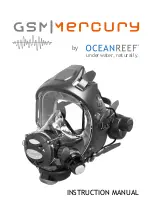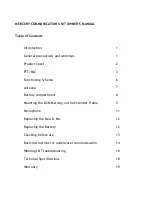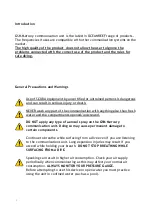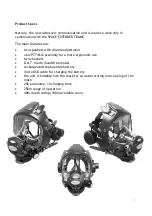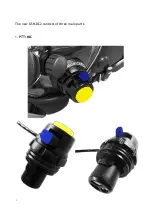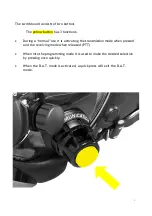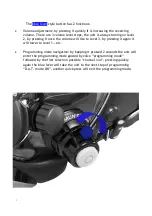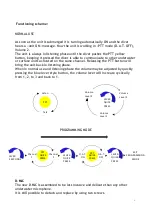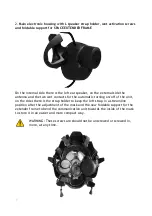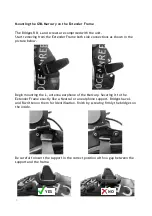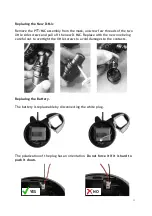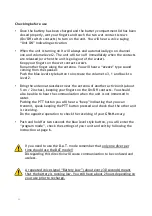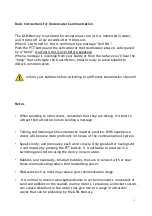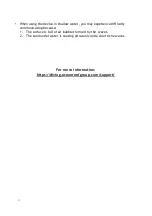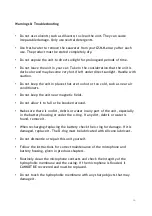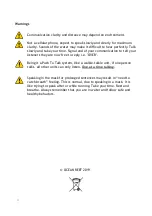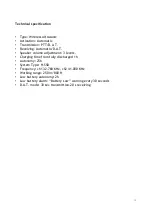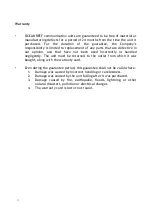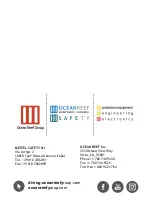
The GSM Mercury uses a dynamic microphone, ”
D-Mic II
” encapsulated and
protected by a hydrophobic membrane.
It is very similar to the
D-Mic
but in a different housing allowing a much easier
handling and use of it.
The microphone allows dependable clear reproduction of the human voice. It
removes unnecessary noise such as the noise of bubbles being exhaled from the
mask.
The
D-Mic II
microphone uses a hydrophobic membrane that allows air to pass
through while protecting the microphone from water. This membrane also
reduces the “muffling” effect allowing a phonic performance that is very high.
Another characteristic of the hydrophobic membrane is its mechanical strength.
The
D-Mic II
, is fitted with a membrane that is designed to handle pressure of
more than 1bar (14.7 PSI). If the membrane brakes, the microphone will flood
causing transmission to stop. OCEAN REEF IDMs masks are designed to operate
with “balanced” pressure. If the mask is removed underwater the microphone
WILL NOT suffer any damage. However, continuing to descend WITHOUT the
mask sealed on the face the microphone may result in exceeding the 1 bar
mecahnical resistance of the membrane, resulting in damaging permantly the
microphone (in relation to the depth at which the mask was removed).
Ascending must be done in accordance with the dive tables or dive computer to
avoid decompression problems. The communicator and microphone should be
rinsed with fresh water (immersed, high pressure water is not reccomended as it
can damage components) after each dive and should be placed in a well
ventilated area that is not exposed to direct sunlight to dry.
D-Mic II
does not have a polarity restriction when assembled on the PTT
contacts. Be careful to unscrew the two screws before removing it.
Clean the contacts and lubricate them on a timely base.
Microphone
11
Summary of Contents for GSM Mercury
Page 1: ...underwater naturally by INSTRUCTION MANUAL...
Page 2: ......
Page 6: ...The new GSM DC2 consists of three main parts 1 PTT MIC 3...
Page 23: ......

